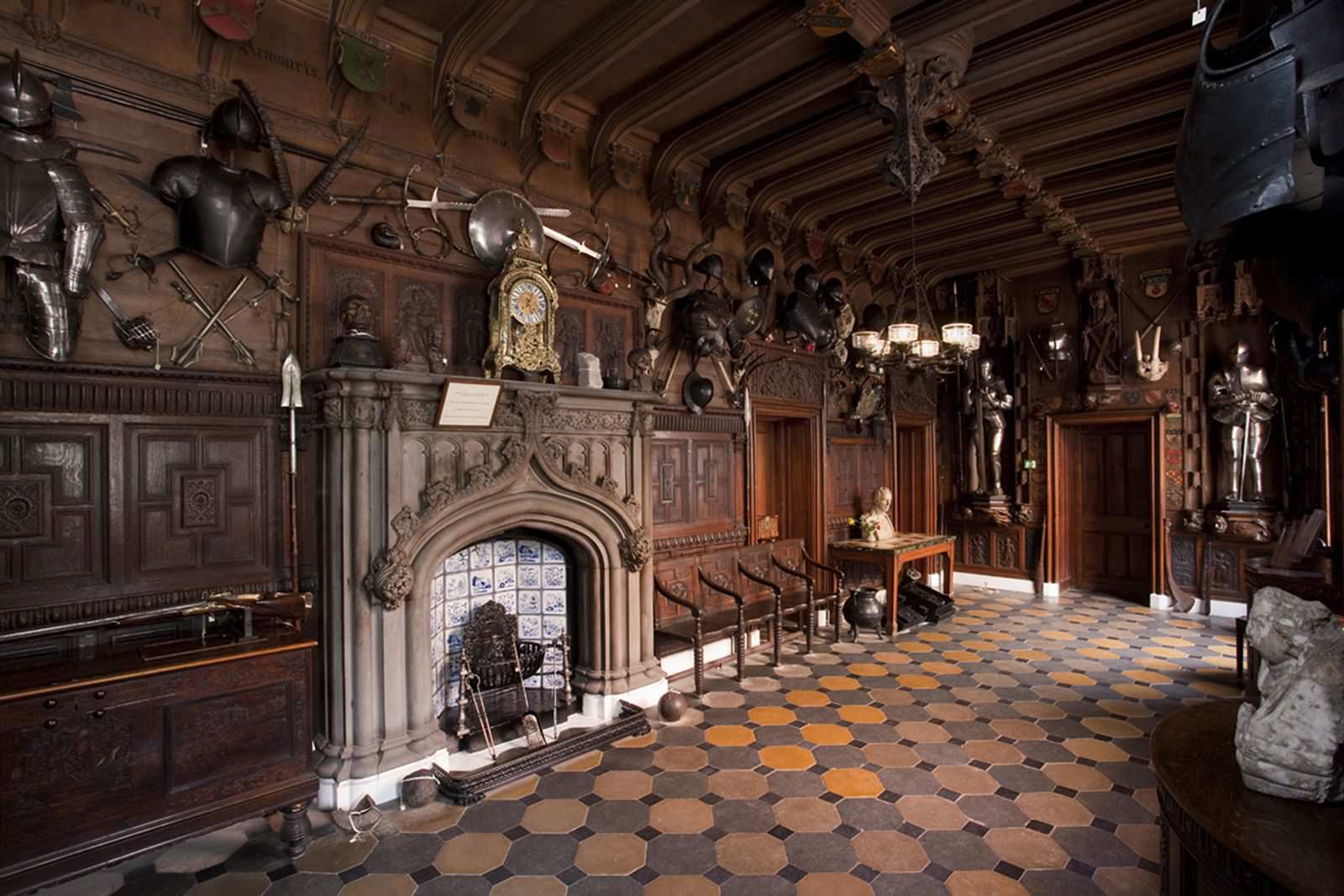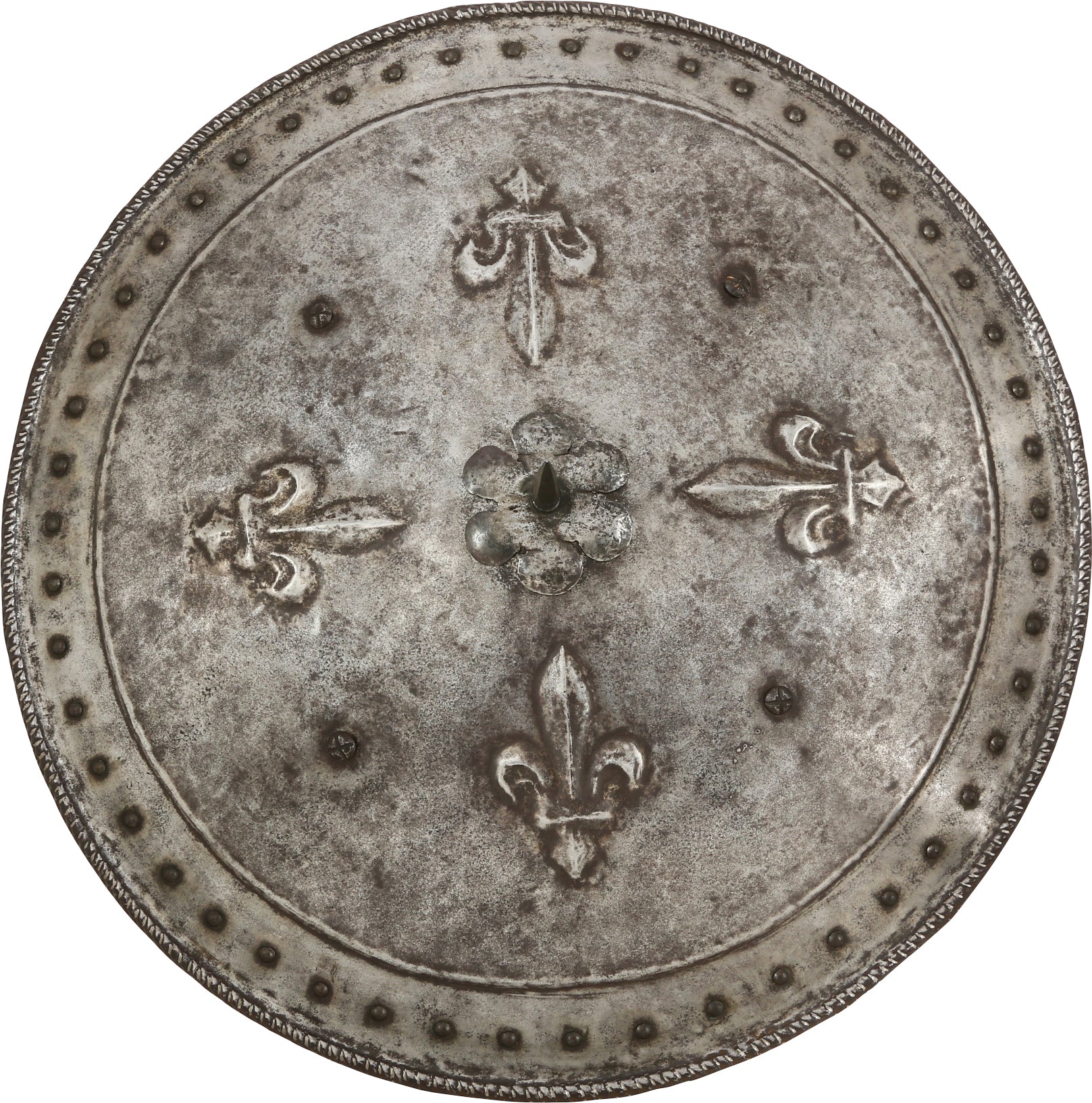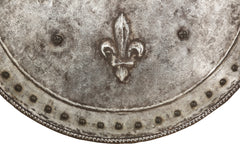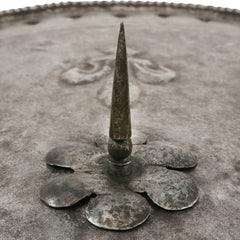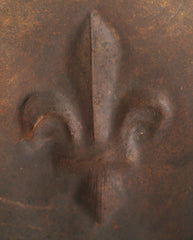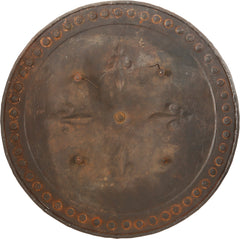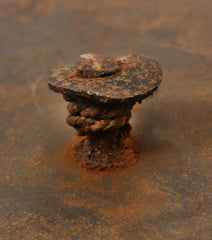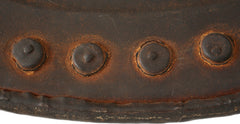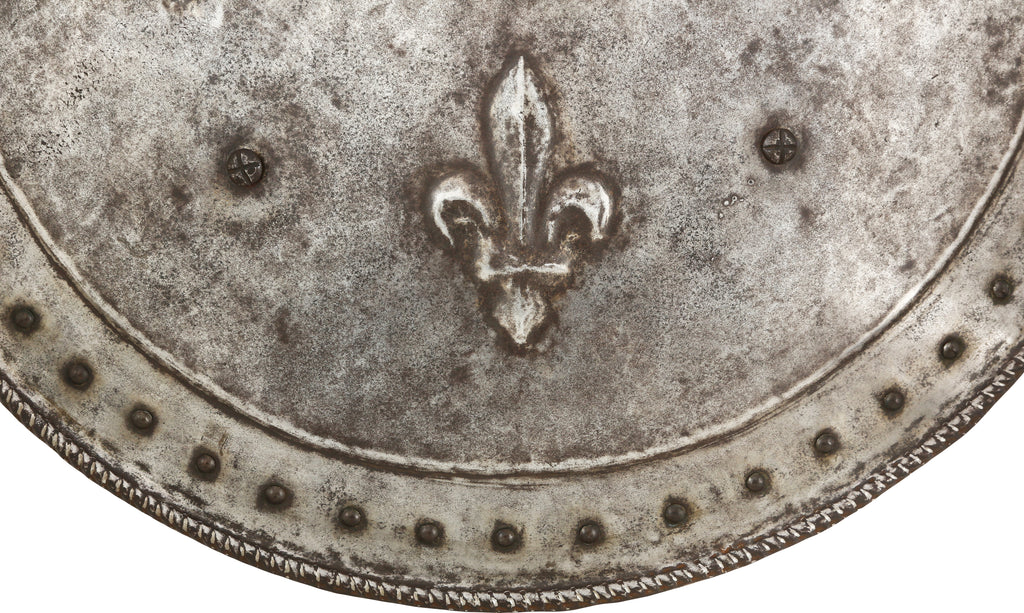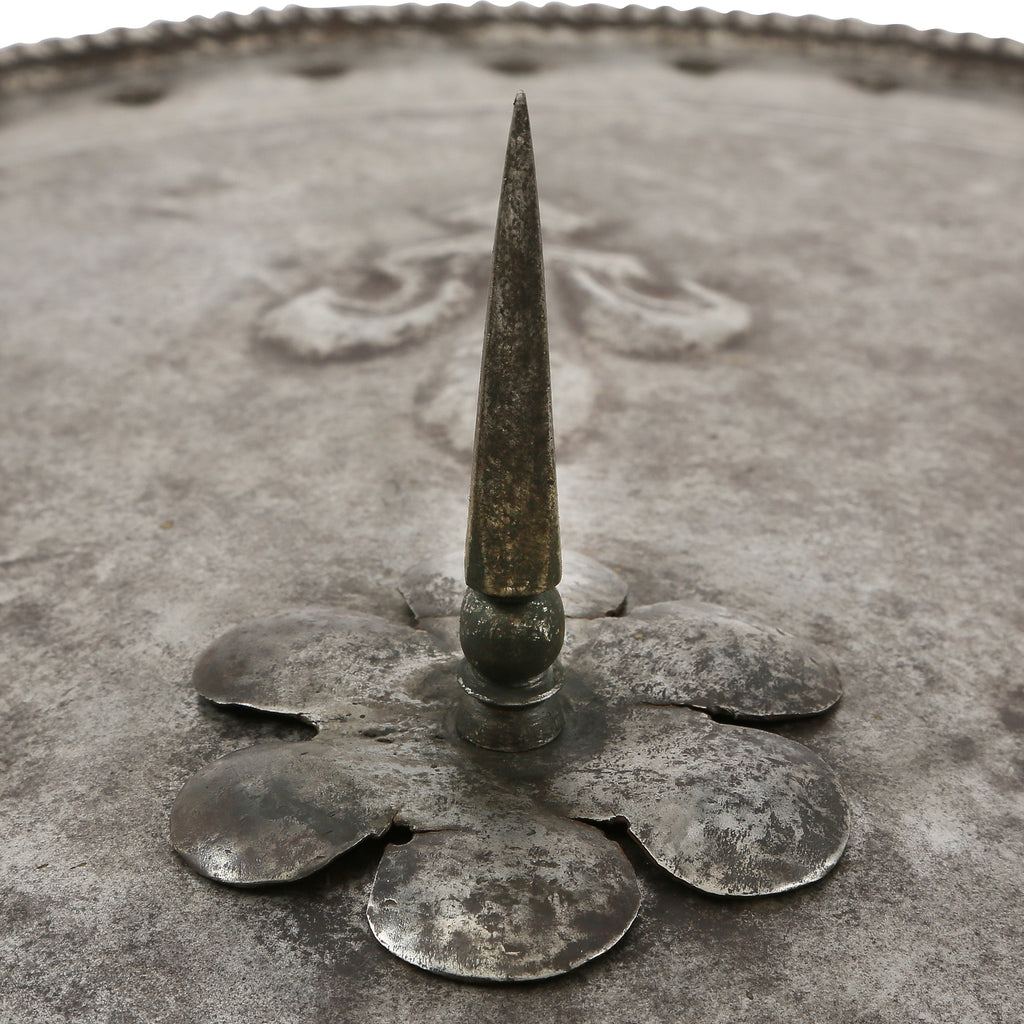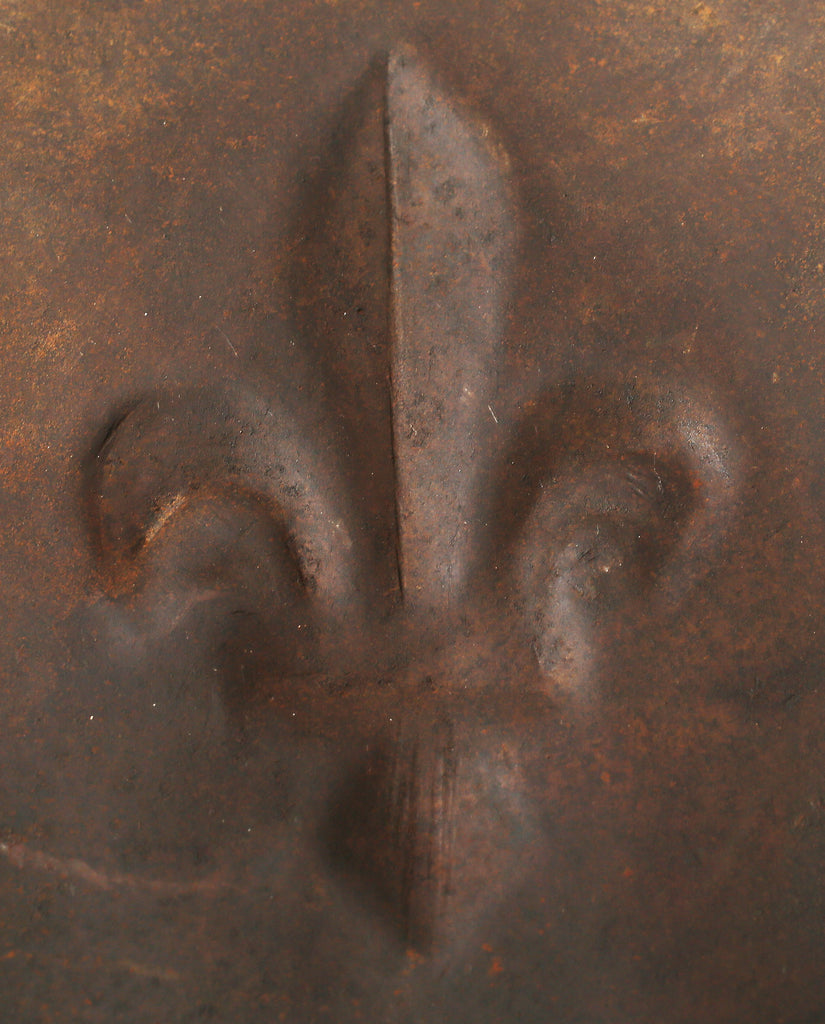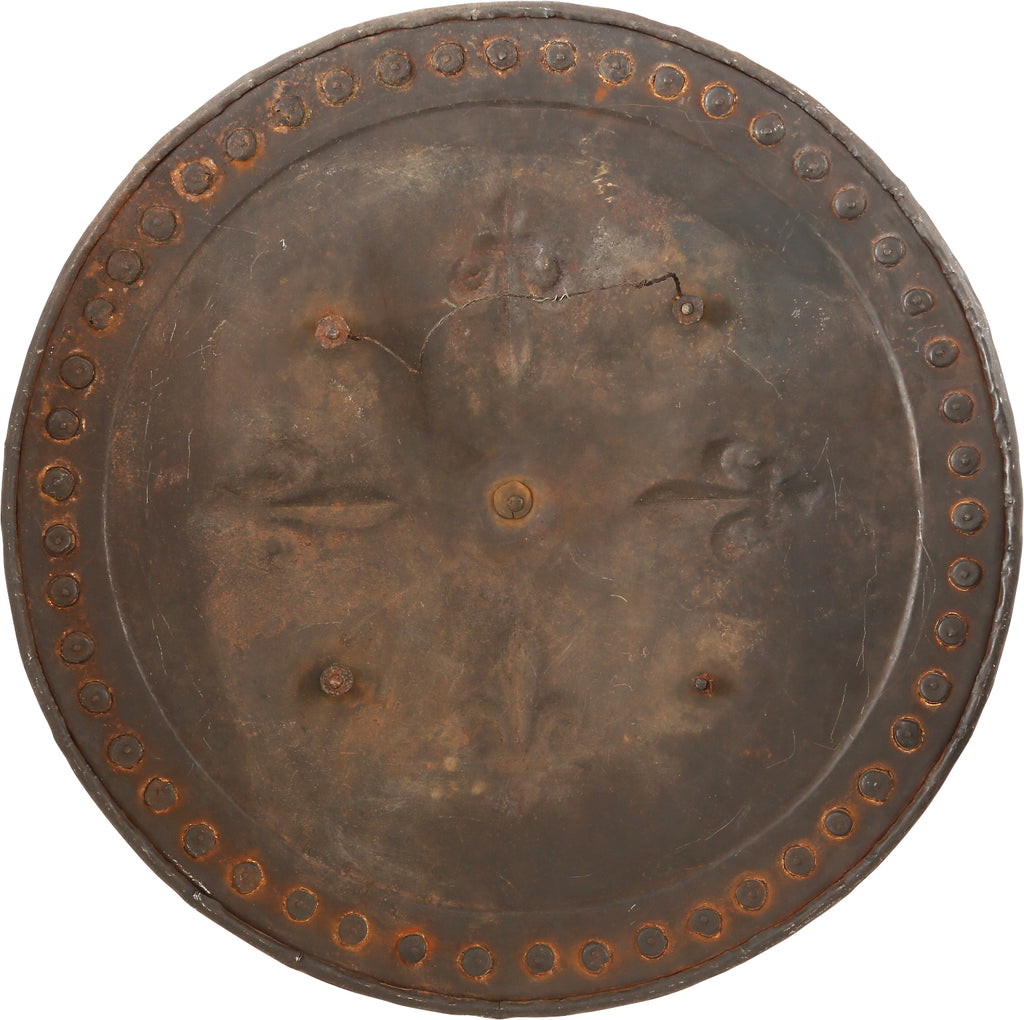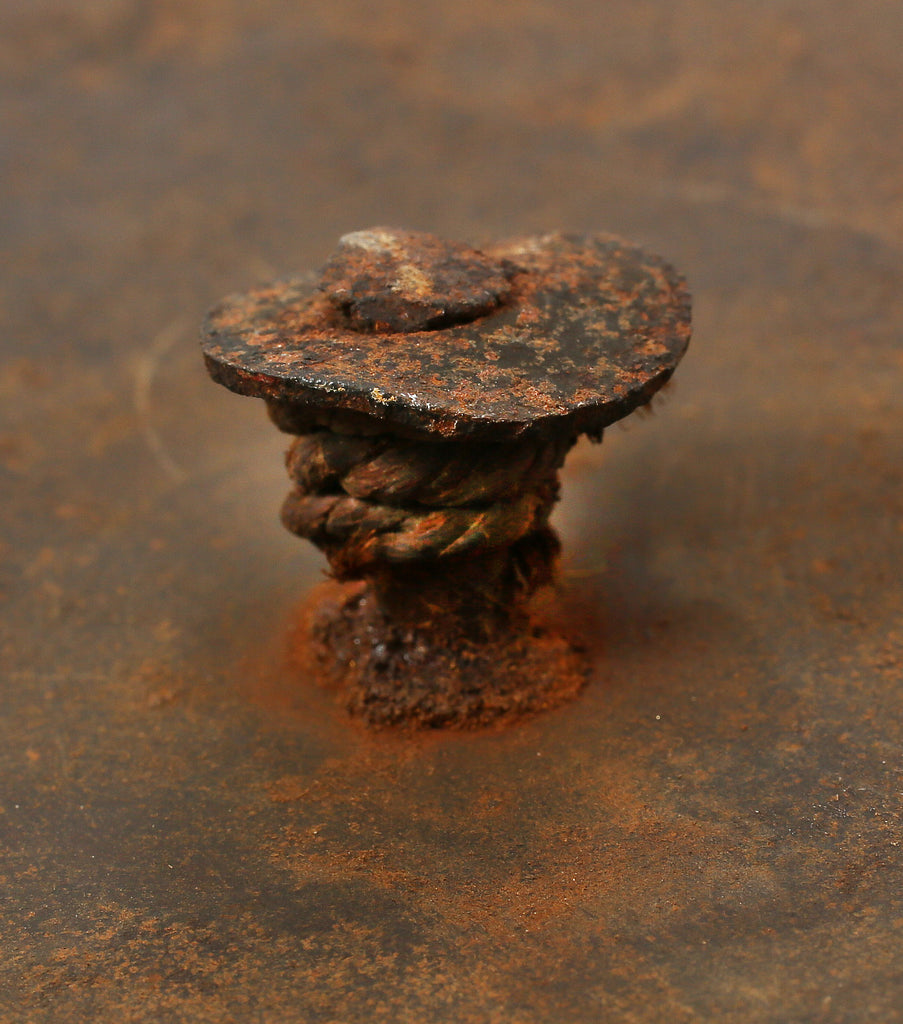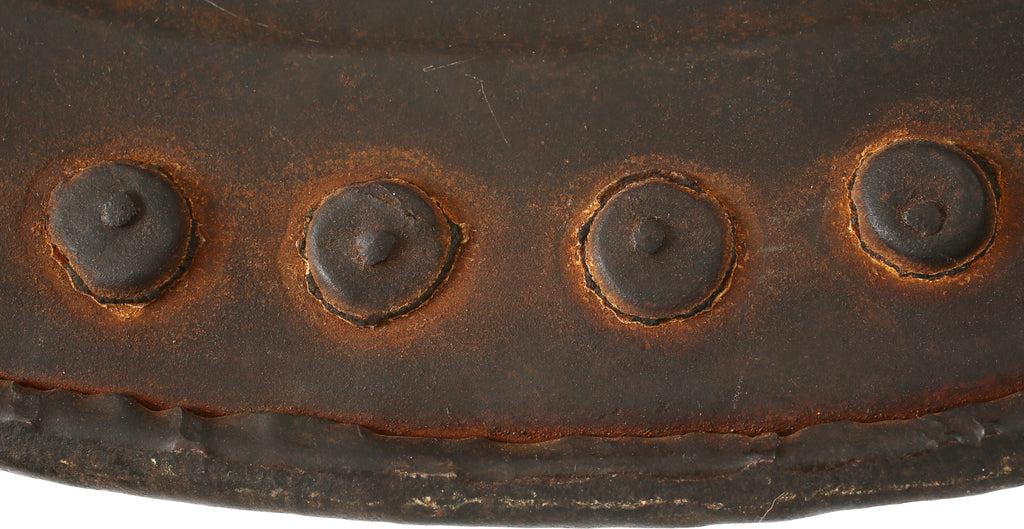In Renaissance Italy, the struggle for power was intense and relentless. It was characterized by treachery and often achieved by assassination. People in positions of power, royalty, nobility, and some clergy, were protected in their castles and palaces. When they ventured out, even to the church, it was in a procession, accompanied by an entourage of armed guards. This shield served in such a guard unit. It is 23 7/8” diameter with rolled and roped edge, sunk border, and a central spike in a floral base. It has four raised fleur de Lis, an armorial device incorporated in several Italian family coats of arms as well as specific to the City of Florence. Four studs cut with crosses serve to anchor the en armes (hand/arm grips), now lacking on the reverse. The depth of relief on these studs indicated that a thick pad, as well as a leather liner, was originally on the back. Remnants of the leather surround the gussets which secured it to the shield edge. This shield would have been carried by a guard in armor, armed, probably with a halberd, ranseur, or glaive.




